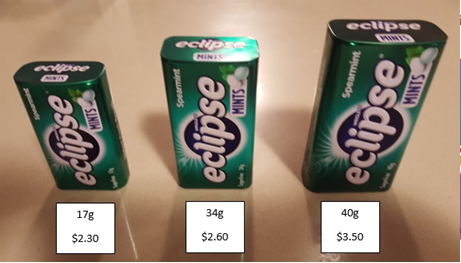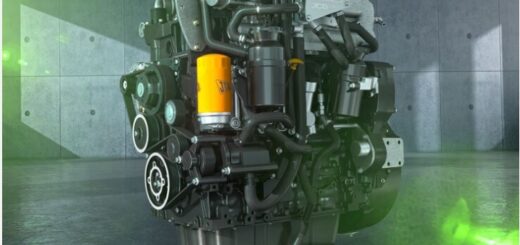Lockdown can make you do strange things…
What can I say – I’m interested in pricing…
So when Wrigley’s released new versions of their ‘Eclipse’ mints in Australia I took notice. Many will be familiar with the original 34g container – kudos due on the iconic metal tin packaging design. However we are now presented with a new ‘mini’ at 17g and a ‘maxi’ at 40g… this is where things start getting interesting.
Now before anyone gets too hung-up on the price-points I accept that there is actually a broad spread in the market which is only further complicated by the frequent ‘2-for-1’ pricing strategy but accept my pricing as an average observed.
So… using the original as a benchmark… I can now buy a mini which is 50% of the product volume… for 12% discount? Or I can buy a maxi which is 15% addition in volume for a 35% increase in price… Confused? You should be – that’s the plan.

| mini | original | maxi | |
| size (g) | 17 | 34 | 40 |
| cost AUD | $2.30 | $2.60 | $3.50 |
| # mints (avg) | 24 | 47 | 55 |
| $/mint | $0.10 | $0.06 | $0.06 |
| unit cost @1.5c a mint | $0.36 | $0.71 | $0.83 |
| assumed packaging @ 30% – 100% markup | $0.35 | $0.39 | $0.53 |
| Assumed Cost (incl ohead) | $0.71 | $1.10 | $1.35 |
| Margin @ POS | 326.2% | 237.4% | 259.3% |
Let’s just call this a ‘back of the napkin’ exercise but some quick numbers seem to validate the approach – purchases on either side of the ‘original’ product appear to deliver superior returns.
Hey, you may find this mind numbing, but I find it interesting…



